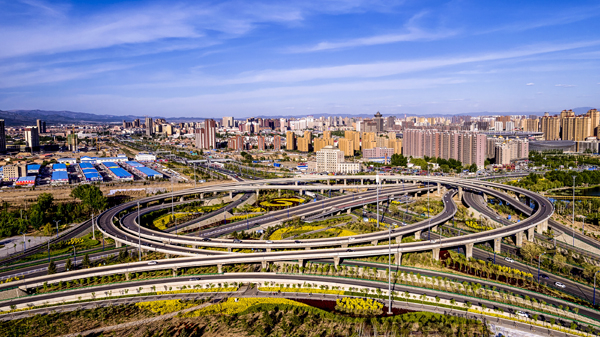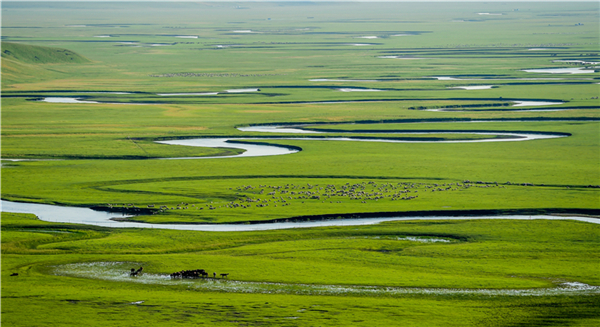Inner Mongolia transforms over 75-year period
Editor's note: This year marks the 75th anniversary of the establishment of the Inner Mongolia autonomous region under the leadership of the Communist Party of China. During a 75-year period, Inner Mongolia has experienced tremendous economic and social change.

Inner Mongolia is seeing rapid development of its road network. [Photo/chinadaily.com.cn]
In May 1947, the Inner Mongolia autonomous region was formally established as the first ethnic minority autonomous region under the leadership of the Communist Party of China.
At that time, the region's productivity was very backward and the people's material living standards were quite low.
That year, its GDP was 537 million yuan ($80.57 million), per capita GDP came in at 96 yuan and its fiscal revenue was only 90,000 yuan.
The earliest authoritative data from Inner Mongolia shows that in 1952, the per capita disposable income of urban residents in the region was 167 yuan and the per capita net income of farmers and herdsmen was 106 yuan.
However, over the past 75 years, Inner Mongolia's economic strength has grown from weak to strong, constantly leapfrogging to new levels.
Statistics from the region's authority show that in 2021, the GDP of Inner Mongolia hit 2,051.42 billion yuan, an increase of 3,820 times compared with that in 1947, while per capita GDP came in at 85,422 yuan, an increase of 890 times compared with 1947.
In terms of per capita income, in 2021, the per capita disposable income of all residents in the region reached 34,108 yuan.
Of that, the per capita disposable income of urban permanent residents was 44,377 yuan, an increase of 266 times compared with 1952, while the per capita disposable income of rural and pastoral residents was 18,337 yuan, an increase of 173 times compared with 1952.

Inner Mongolia possesses grand grasslands and rich rivers. [Photo provided to chinadaily.com.cn]
At the beginning of the establishment of the autonomous region, the economic structure was extremely uneven. It was basically dominated by the agricultural sector and animal husbandry.
Its industrial foundation was very weak, commodities were in short supply and the market was depressed, according to the person in charge of the Statistics Bureau of Inner Mongolia Autonomous Region.
Over the past 75 years, under the leadership of the Party, the region's economic structure has been continuously optimized.
Statistics show that the ratios of the three main industrial structures of Inner Mongolia in 1947 – the primary, secondary and tertiary industries – were 76.7:7.1:16.2. Until the early 1970s, the primary industry was still the main industry.
Since the reform and opening-up in 1978, Inner Mongolia's agricultural and animal husbandry sectors have completed the transition from a self-sufficient natural economy to a modern agricultural and animal husbandry commodity economy.
In 2018, Inner Mongolia became one of six provinces and autonomous regions in the country to produce enough grain to meet local needs and it had the ability to supply 5 million metric tons of milk and 1.5 million tons of meat in a stable fashion to places outside the region every year – becoming a veritable granary, meat depot and milk tank for the country.
In 2021, the ratio of the three key industries in Inner Mongolia changed to 10.8:45.7:43.5, and the contribution rates of the primary, secondary and tertiary industries to GDP growth was 9.0 percent, 39.3 percent and 51.7 percent, respectively.



 Print
Print Mail
Mail


